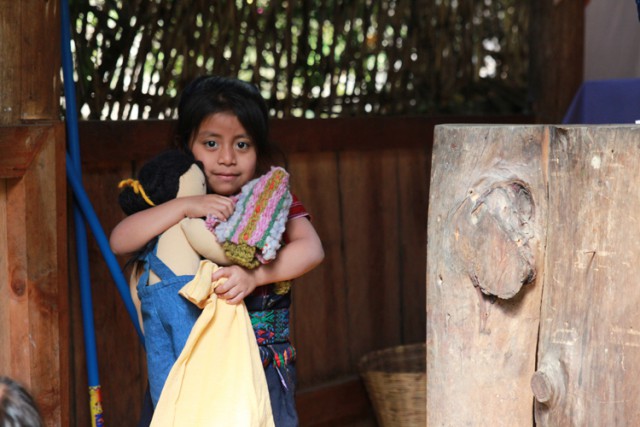
At 7:30 a.m. we start arriving: the teachers, that is. Maribel, Angelina, and Sandra, my colleagues in Escuela Caracol’s preprimary school, walk down from Barrio #1 and I arrive on bicycle from the neighboring town of Tzununa. Sandra and I begin the day in our open-air classroom sweeping out whatever leaves and dust have blown in during the night. The sounds of birdcalls and carpentry are our background noise. At 8:15 the school’s front door opens and the children start to trickle in. The kindergarteners have the longest walk, to the back corner of our school where our two kindergarten classrooms are nestled under matasano and jacaranda trees.
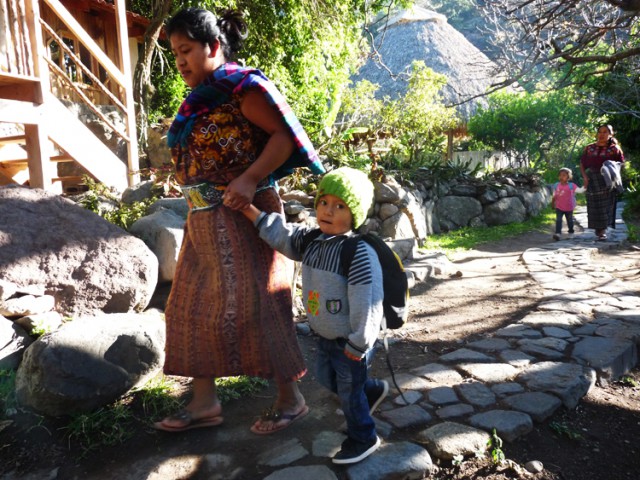
The first ones to arrive help us to set up the benches, wipe the tables down, and prepare fruit for our snack. Once all the children have arrived and class has begun at 8:30, we set out for a short walk around the school grounds. The first stop is our chicken house, where we leave our hens with fresh water, corn, and perhaps some fruit that we did not finish the day before. From there, we explore the gardens, say hello to the administrative staff in the office, or take in the primary school’s vegetable beds. On our way back to the classroom we stop at the stone spiral to sing our morning ronda, or circle. Our class is taught in Spanish, but during the ronda we are able to introduce the children to the sounds of English and Kaq’chikel (the local Maya language of our area) through songs and verses. Back in class it is storytime, drawing time, or watercolor time, depending on the day.
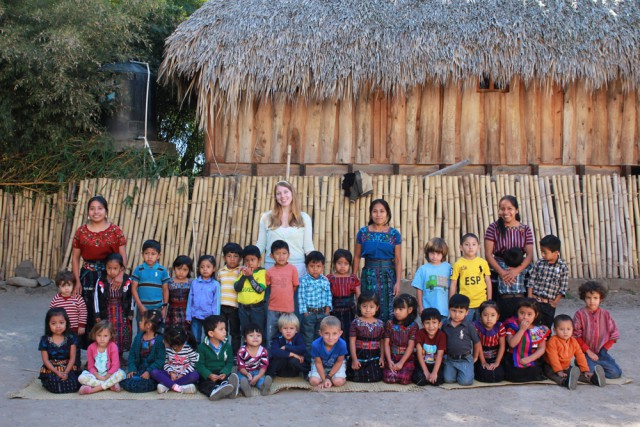
The stories we tell are simple nature tales or Grimm’s Brother’s fairy tales, depending on the group we have. For many of the children, it is the first time they hear a story told in such a manner. Stories like La Zanahoria ( The Carrot) or La Boda del Tio Perico, (Uncle Perico’s Wedding) which are short, repetitive, and silly are always favorites among all ages. When the puppets come out to accompany the stories, the children are thrilled! Once or twice a year, Sandra translates one of the simpler stories into Kaq’chikel and takes over the storytelling.
After storytime is free play. The children scatter into groups, some playing house with our dolls and cooking tortillas and eggs on the comal to sell or give to their classmates; others arranging the benches side-by-side to take trips across the lake in their lanchas. Castles and kingdoms are built on the floor from the large wooden blocks, entire worlds are created out of playsheets, flowers, and puppets. A few of the children get to be Sandra’s helpers, and go to the kitchen with her to prepare our daily snack. The children trickle into the kitchen during the first few minutes to snack on a piece of fruit, and then return to their play. Some help me indoors to wash the tables and benches of our class, to clean and sort the cotton that we harvested during our morning walks, or wash our class towels and sheets. When play time ends, we all clean up together, and then go to the pila to wash our hands and sit down for snack time.
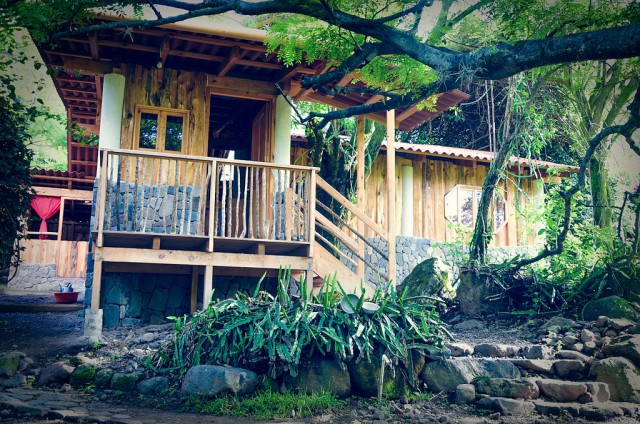
Snack time in our class is, of course, based around wholesome, nutritious foods, but it is also based on the traditional foods of our Guatemalan highlands region. We eat tortillas, tamalitos, beans, queso fresco. We drink lemongrass tea from our garden or pinol, a warm cornmeal based drink. When snack is done, we say thank-you in three languages: Spanish, Kaq’chikel, and English. Then it is washing up time: most of the children help Sandra to wash, dry, and put our dishes away, while a few stay inside to help me clear the table, sweep the floor, and fill cups up with drinking water to use when brushing our teeth.
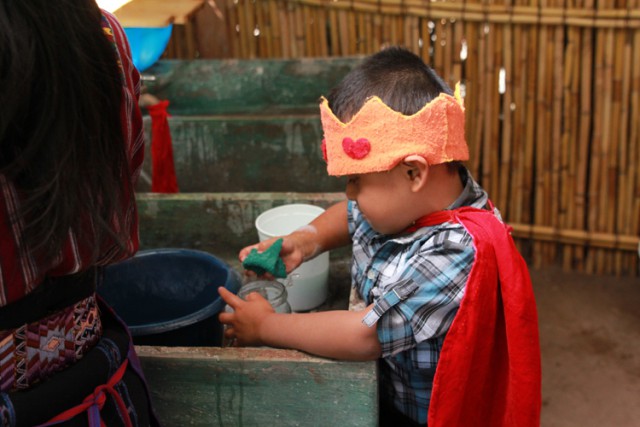
Once both the dishes and our teeth are clean, it is time to go play in our garden! The kids climb as high as they dare in the jocote trees, or use long caña sticks to knock ripe jocote fruits or achiote seed pods down from the trees. Others run around, walk across the balance beam, or search for ripe berries in the berry bramble. At the end of outdoor play, we all gather together again to sit in the shade of the jocote tree and sing our good-bye song, while the parents slowly arrive into our garden to take their children home. The morning is over, and the children leave with hugs and cries of “Adios seño!”
- Colleen Donovan, Lead Teacher, Kindergarten
—————
A Day in the Life of the Waldorf Kindergarten was written by one of Escuela Caracol’s kindergarten teachers: Colleen Donovan. Colleen is from the United States, and has been living in Guatemala since 2008 and working in Escuela Caracol since 2012. She is enrolled in the Early Childhood Education program at Sunbridge Institute in New York. The other kindergarten teachers at Escuela Caracol are: Maribel Mendoza, Sandra Perez, and Angelina Quiacain and they are all from San Marcos la Laguna, a highlands town on Lake Atitlán in Guatemala. Maribel Mendoza graduated from the Waldorf Early Childhood Education program in Cuernavaca, Mexico in 2014 and is the first indigenous Maya to earn Waldorf teaching certification. Sandra Perez is also working towards completing her certification through the Cuernavaca program.
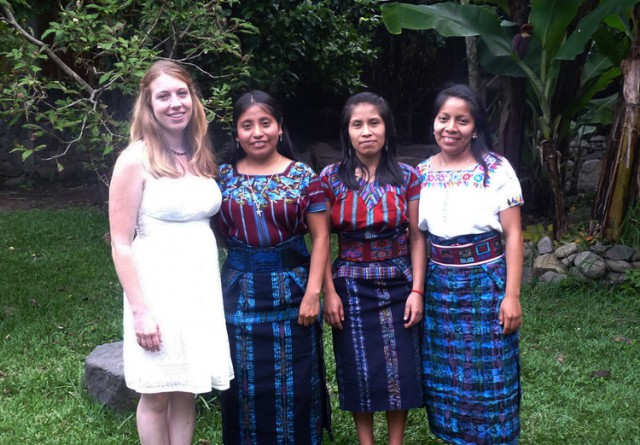 (in photo from left to right: Colleen Donovan, Maribel Mendoza, Angelina Quiacaín and Sandra Pérez)
(in photo from left to right: Colleen Donovan, Maribel Mendoza, Angelina Quiacaín and Sandra Pérez)
About Escuela Caracol:
In a country still recovering from a 36 yearlong civil war that ended less than two decades ago, there is a great need for our healing and comprehensive educational community. Our commitment to building intercultural solidarity is serving an increasing number of families in the Lake Atitlan region of Guatemala and is becoming a solid model of empowerment for the marginalized people in Central America.
Escuela Caracol was founded in 2007 by two Americans, Joshua and Courtney Wilson, in an area that has been inhabited by indigenous Maya for thousands of years. It is one of the poorest regions in Guatemala, with 80% living in poverty, 25% in extreme poverty and only 62% of the children making it to grade 6. Only 8.5% of Guatemalan youth pursue university education, and for women it is LESS than 1%.
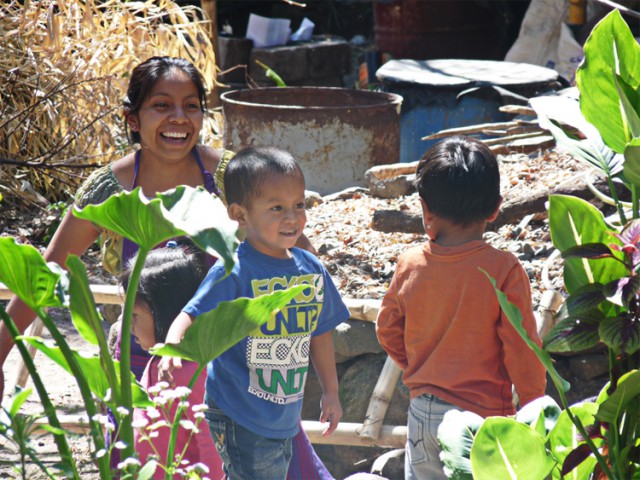
Waldorf education is a natural fit for this Guatemalan community where we teach children from Kindergarten through Grade 6 with a pedagogy that sprang from the intention of renewal in Europe following World War I. Based on the fundamental principles: freedom, equality and solidarity, creative expression, practical work, the natural environment and social harmony are part of each day at Caracol. Also local indigenous customs are celebrated and honored as a consistent inspiration for the emergence of a new culture. The children are motivated, confident and self-directed in their studies and in their relationships with their peers.
In a recent reflection about the founding impulse of Escuela Caracol Joshua Wilson offered that he and Courtney “were sociologists who studied the ills of modernization and global capitalism, and they longed for social justice and a thoroughgoing hope for a better world. We believed in the underlying goodness of the world, and we also saw a suffering world in need of healing. We desired to pass this on and plant a small seed of peace.” Joshua and Courtney are currently in the middle of a sabbatical year in California with two girls and new baby boy.
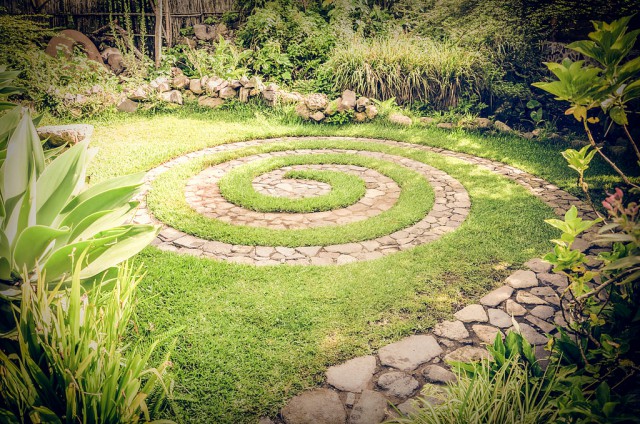

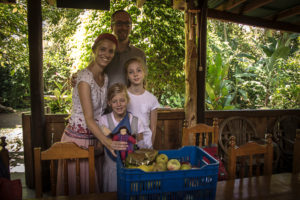
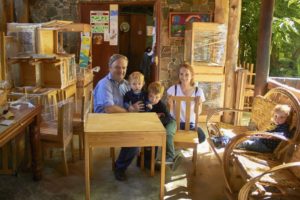





 (in photo from left to right: Colleen Donovan, Maribel Mendoza, Angelina Quiacaín and Sandra Pérez)
(in photo from left to right: Colleen Donovan, Maribel Mendoza, Angelina Quiacaín and Sandra Pérez)
